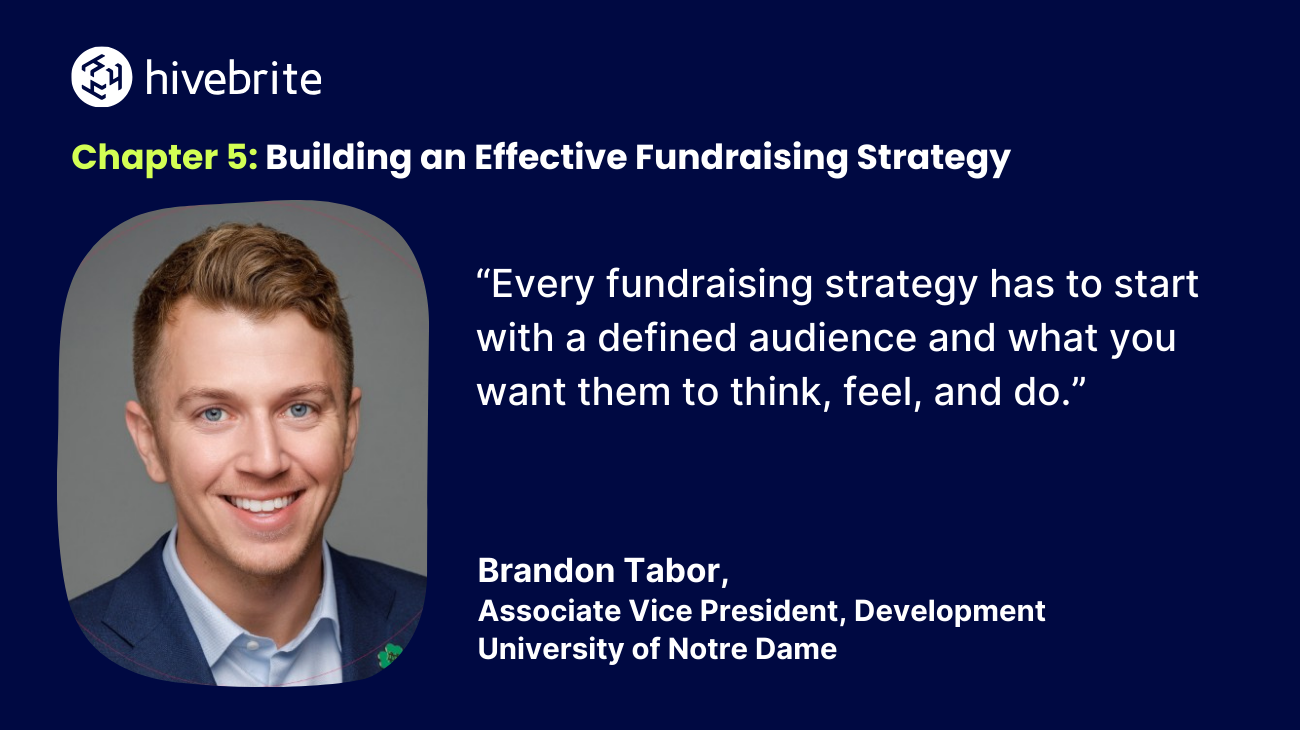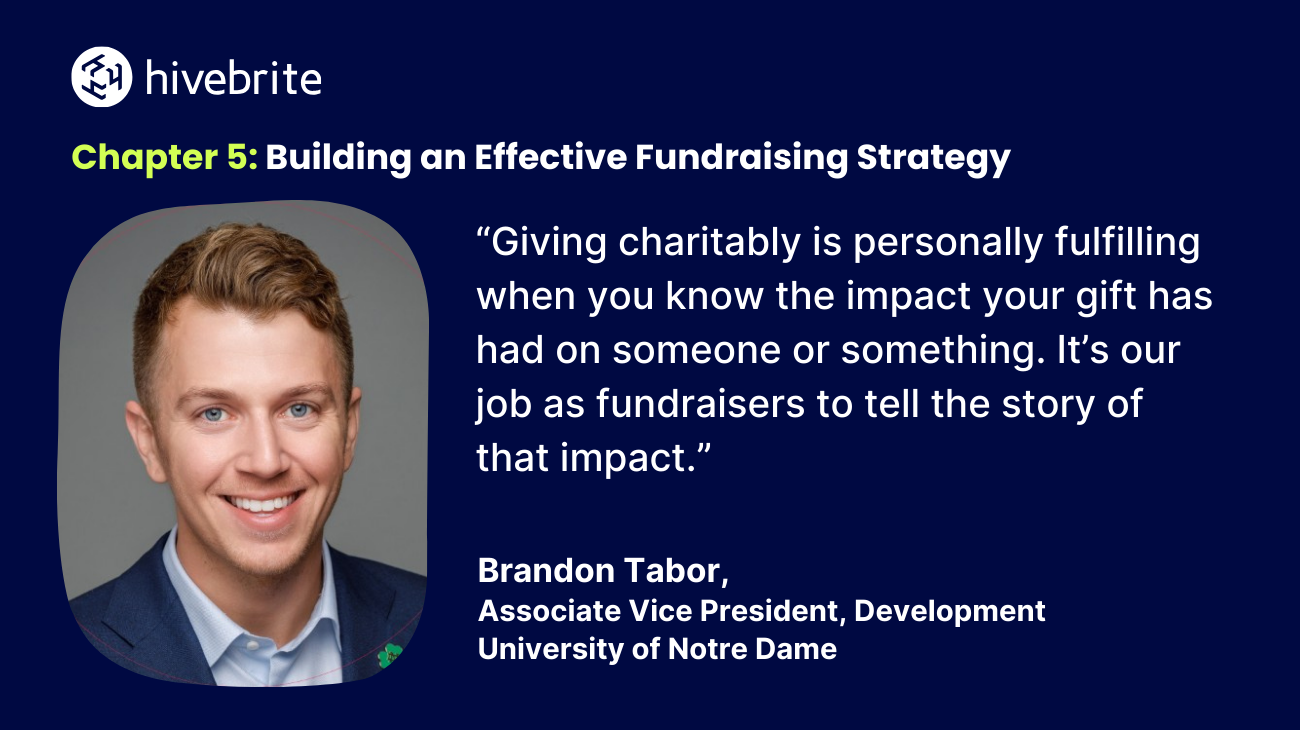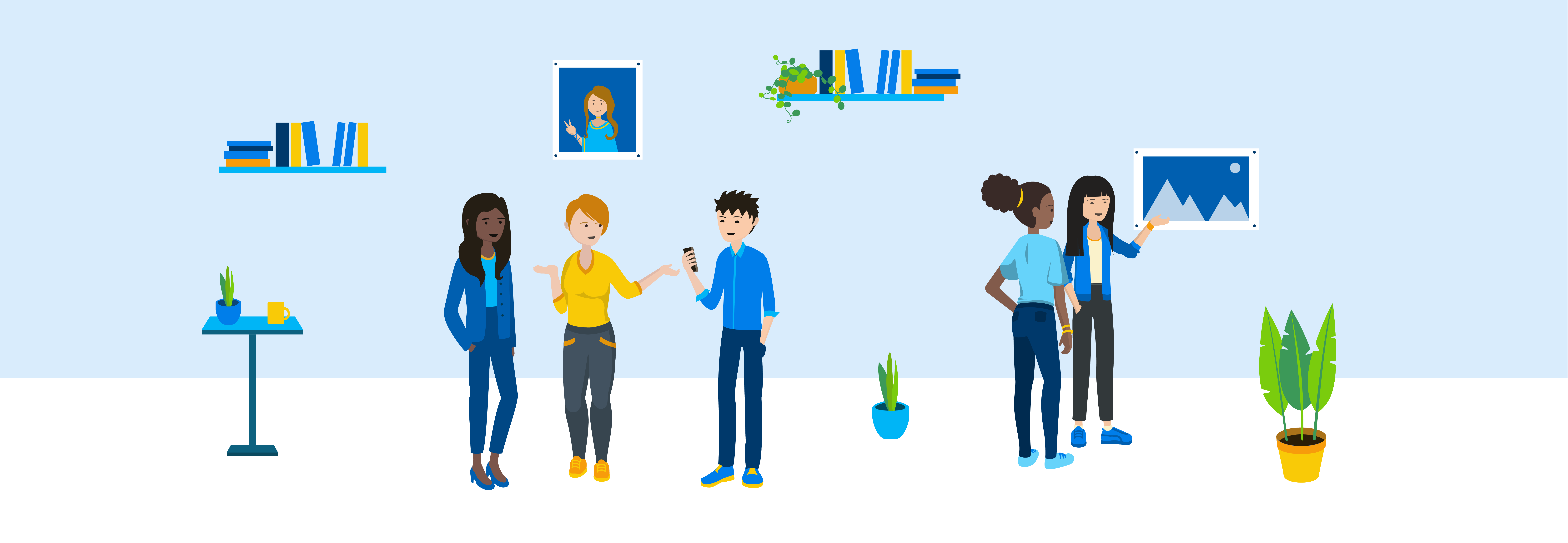Let's face it; fundraising can be tough.
You've got a lot of moving parts to deal with. Your donors are inundated with requests for contributions from multiple groups. You're constantly tasked with thinking of new ways to cut through the noise and stay relevant.
This is where your fundraising strategy can help.
Your fundraising strategy guides you on how to plan and execute successful fundraising campaigns to achieve your organization’s goals.
Brandon Tabor, Senior Director, Annual Giving at the University of Notre Dame, is our featured expert for The Alumni Connection’s fundraising chapter. In his interview, Brandon shared creative tips and actionable insights for building an effective fundraising strategy.
Here are some highlights from his interview to help you maximize your fundraising efforts.
What are the critical elements that every fundraising strategy needs to cover?
I would recommend a five-step process where you answer these questions:
1. AudienceWho is your audience?
2. What’s the walk-away?
Meaning, what do you want them to walk away thinking, feeling, and/or doing?
3. Channels
What are the channels you´re using to reach out to them? Is it an email? Is it a text message? Is it social media?
4. What does great look like?Is it 10 donations? Is it 15 donors? Is it lots of clicks? Define it upfront.
5. Stories
The last piece is the most important and most commonly overlooked, and that is, what are the stories you'll tell that audience that will make them think, feel and do?
I’ll walk you through this in a simple scenario!
Let's pretend we’re targeting an audience of young alumni that we want to ask to give back to the University. When communicating with them, we’ll define what we want them to think, feel, and do before going further. In this case, we want them to think their gift matters, feel it’s important to give to others who follow in their footsteps at Notre Dame, and make a gift. When considering channels, direct mail may not be the best. We move around a lot when we’re young. What if their address has changed? Maybe texting, email, or social media are better channels for this audience. Now, we need to define what great looks like. Is it five gifts? Is it 50 gifts? Is it a percentage or dollar amount? You decide!
Now, here’s the fun part. We need to explore what stories we’re going to tell to this audience of young alumni that will make them think, feel, and do what we defined at the beginning of this exercise.
Will a story about the impact of financial aid inspire them to give to financial aid? Maybe it’s a story about Notre Dame’s Catholic mission and service to the world or simply speaking to the tradition of giving back to your alma mater. Whatever it is, we beat up these story ideas, always asking ourselves if they would inspire young alumni to think their gift matters, feel it’s important to give to others who follow in their footsteps at Notre Dame, and make a gift.
Every fundraising strategy has to start with a defined audience and what you want them to think, feel, and do. You have to define the channels that you're going to use to reach out to them. You have to have some sort of goal and define what success looks like. And then you just gotta take a pile of stories and beat them up against the wall. Which one of these stories is going to inspire them to respond?
How do you go about defining the story you need for your audience?
One way that you can do this is by using data. I'll give you a very simple story that's all data-driven. We looked at an audience of donors who donated $200 or less last year. We wanted to ask them to make that gift again. We wanted them to walk away knowing that their gift mattered—even if it was $10.
So the story we told them was,¨Last year, gifts of $200 or less fully funded the full cost of tuition for 57 deserving Notre Dame students. Your gift is powerful and makes a direct impact on the lives of students who need you. Please make this important gift again.¨
That's a powerful story of impact that data can tell you.
For other stories, you have to get your boots on the ground and ask around.
At Notre Dame, we have a student engagement center called ND Listens that calls members of the Notre Dame Family to listen to them, learn from them, and love them. Student call centers are common in American universities—and the majority call to ask for donations. But we found that student turnover in these call centers can be high. More importantly, it's not a fun job for students to “dial for dollars,” and we want our relationship with these students to be nothing but positive. So, we said, let's stop asking for money and instead listen, learn, and love. Now we’ll call to say, “Hello from Notre Dame,” “Happy birthday,” or even let folks know that Notre Dame is thinking about them.
During COVID, we called older alumni—thinking some could be feeling lonely or disconnected from the things they love. That was our audience. The walk away was¨Notre Dame knows me, thinks about me, and loves me.¨ What great looked like was phone calls over 20 minutes—that meant we were having a good conversation. And so the story we told them was: ¨Notre Dame loves you and we’re thinking about you. How are you doing?¨ Our pickup rates went from about 3% to almost 25% and we had thousands of calls over 25 minutes.
We had many people ask us to call them back each month. I love this—and we do it! We’ve gotten so much more from listening, learning, and loving the Notre Dame Family, and it has been really powerful.
Now we have a group of students who understand fundraising from the standpoint of love, engagement, and connection. Additionally, they understand how their own stories—or their friend’s stories—can be inspiring for others.
For example, a student named John enrolled at Notre Dame, following in his dad's footsteps who also went to Notre Dame. John's dad was recently diagnosed with ALS, which causes body functions to start shutting down. He can't walk, struggles to speak, and is bound to a wheelchair. When John considered what he wanted to do with his time at Notre Dame, he decided to study robotics to help build better living conditions for those in situations similar to his father's. It became his life’s purpose.
John received a scholarship from funds directly tied to grassroots donations—gifts of $500, $50, $20, and so on. Now, as John is finishing his degree, he's invented a mechanism that you can mount to a motorized wheelchair to guide it with your eyes. If you lose functionality with your hands from diseases such as ALS, you can use the motion from your eyes to steer. His dad uses this technology in his daily life and many more will soon, too.
When we hear about a story like this, we let people know that gifts of all sizes help students like John not only make life better for his own father but for everybody like his father. That's what our students do. They're not just coming here to get a degree for themselves. It's to get a degree in service to others.
What is the biggest challenge in collecting donations once you’ve engaged someone with a story?
Reducing friction at every step, making giving the easiest part of their day, and then stewarding them with powerful stories of impact so they know their gift mattered.
We cannot thank people enough for choosing to direct their hard-earned money to noble causes that provide for a world that is deeply in need. Thank them authentically and often while letting them know how their contributions are making a difference.
What are some of the virtual engagement or stewardship tactics that you implement that are successful?
COVID accelerated a lot of things for a lot of people. Before COVID, our number one engagement tool was in-person events at football games. Every weekend, we have 80,000 people in our football stadium and tens of thousands surrounding it. So we throw events. You get invited to various activities and we make your weekend experience top-notch. When COVID happened, we had to pivot.
So, we started “Live Chats from Notre Dame.” During Live Chats from Notre Dame, we tell the stories of the amazing things happening at Notre Dame and invite our donors to tune in via YouTube livestream.
Our Vice President is a great storyteller and even better listener. For 30 minutes every other week, we’ve asked him to interview someone on campus who's doing something really awesome. It could be a coach for a sports team, a design professor taking students to remote areas in Africa to help design awareness campaigns, or a student, like John, who I mentioned before.
We hope our audience, our donors, walk away feeling that they have a part in all the good that’s happening here, because they do!
|
Download The Alumni Connection to read more on Brandon’s thoughts on:
|
Hivebrite is an all-in-one community management platform. We empower organizations of all sizes and sectors to launch, manage and grow fully branded private communities. Schedule a demo today!





%20(1).png?width=1650&name=hivebrite-logo%20(2)%20(1).png)